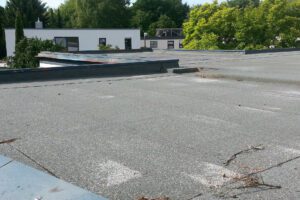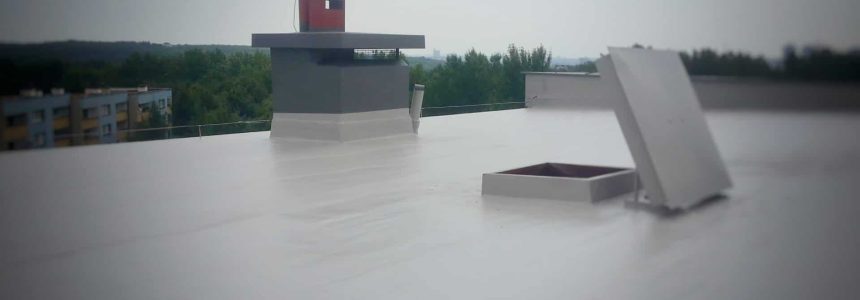

The expanse of a flat roof is particularly vulnerable to moisture due to improper waterproofing. Traditional felt roofs, given their nature and gradually diminishing properties, require effective protection that encompasses not just the surface, but also every seam and joint.
This is where seamless waterproofing membranes come into play for flat roofs that need either modernisation or a complete overhaul. Liquid waterproofing that solidifies upon application is perfect for older roofs as well as new and under-construction projects. This solution’s popularity arises from both its cost-effectiveness and the outstanding results stemming from the absence of seams and excellent substrate adhesion.
Cold-applied coatings are renowned for their remarkable elasticity and flexibility. Consequently, the final layer not only secures any cracks and fissures but also fine details like junctions, seams, and edge joints. These areas are usually the primary trouble spots on roofs as accumulated moisture leads to leaks. Utilising a waterproofing membrane fully minimises the potential for water-induced roof damage.
Liquid-applied waterproofing membranes offer complete hydro-isolation integration with the treated surface. The ease of application, combined with the substance’s elasticity and stretch, ensures the solidified structure covers every part of the roofing, even those areas that aren’t immediately visible. Crucially, its liquid state facilitates adaptation to unconventional shapes.
For the rare occasions where repairs are needed, there’s no requirement to refurbish the entire substrate. The longevity of liquid waterproofing averages over 20 years, with only localised treatments needed to maintain uniformity.
Water-tightness, achieved through the application of a liquid membrane, is typically preceded by a suitable primer to enhance the waterproofing’s durability. The membrane itself should be tailored to specific roof conditions, like potential excessive sun exposure or pronounced existing cracks. Therefore, the liquid waterproofing membrane might also be protected with an additional top layer to amplify its resistance against UV rays.
Such solutions ensure not just complete waterproofing – paramount for flat roofs which naturally have limited rapid water runoff capabilities – but also:
For these reasons, roofing membranes – like the HYDRONYLON® membrane – are noted for their extensive application range. They can form the waterproof layer on functional roofs or be the final covering for non-functional roofs.
Equally crucial is the possibility of applying the waterproofing around technical installation points. With conventional roofing solutions, elements such as antennas, solar panels, or air-conditioning units become areas at an elevated risk of leaks and dampness. The HYDRONYLON® membrane protects both the roof and any points or areas on its surface.